
Ioannovsky Bridge is one of the bridges in St. Petersburg.
This is the oldest bridge in the city - the same age as St. Petersburg.
The Ioannovsky Bridge runs through the Kronverksky Strait and connects the Petrogradskaya Side (Petrogradsky Island) with St. John's Gate Peter and Paul Fortress (Hare Island).
The bridge is located near the left-bank end of the drawbridge Trinity Bridge.
Since its construction at the very beginning of the 18th century, the moth has been called "Petrovsky". In 1887, it was renamed "Ioannovsky Bridge". The bridge got its name from the nearby St. John's Ravelin, where the St. John's Gate is located, to which the bridge leads.
The Ioannovsky Bridge is 74.66 meters long and 10.54 meters wide.
It is a seven-span structure with metal structures, on wooden channel supports with stone arcades on both sides of the bridge.
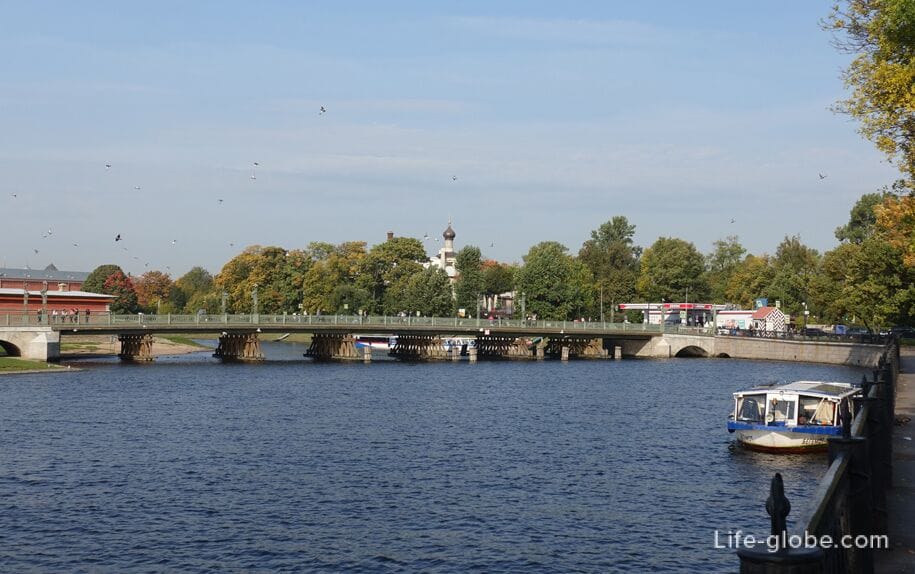
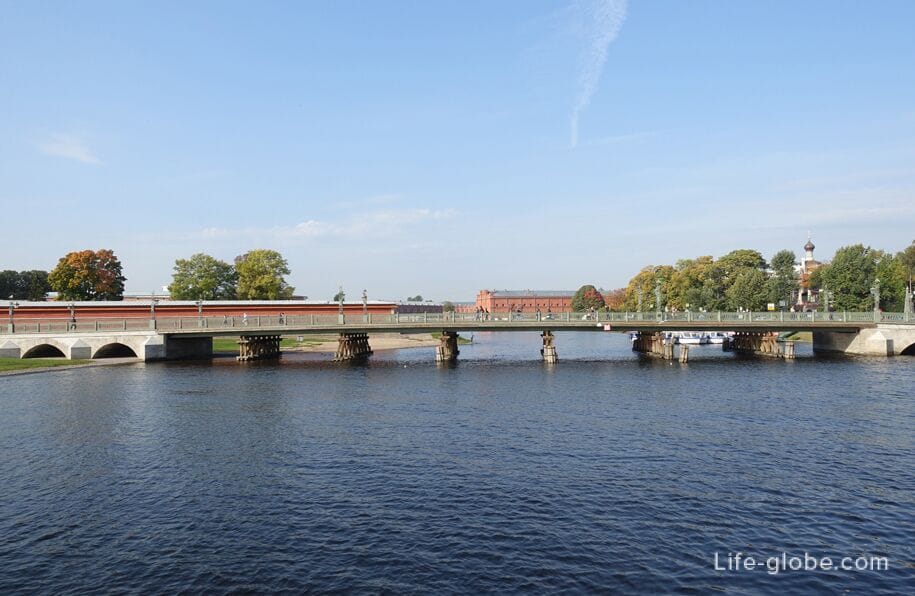
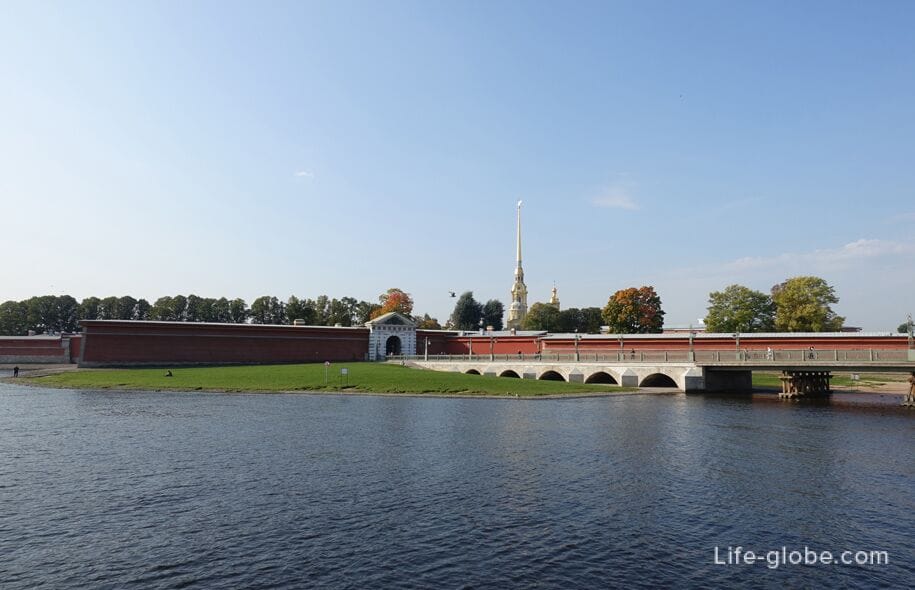
The bridge has a central roadway and sidewalks on both sides with railings in the form of a patterned lattice. The lampposts of the bridge are decorated with figures of double-headed eagles.

View of the Ioannovsky Bridge and the Ioannovsky Gate of the Peter and Paul Fortress
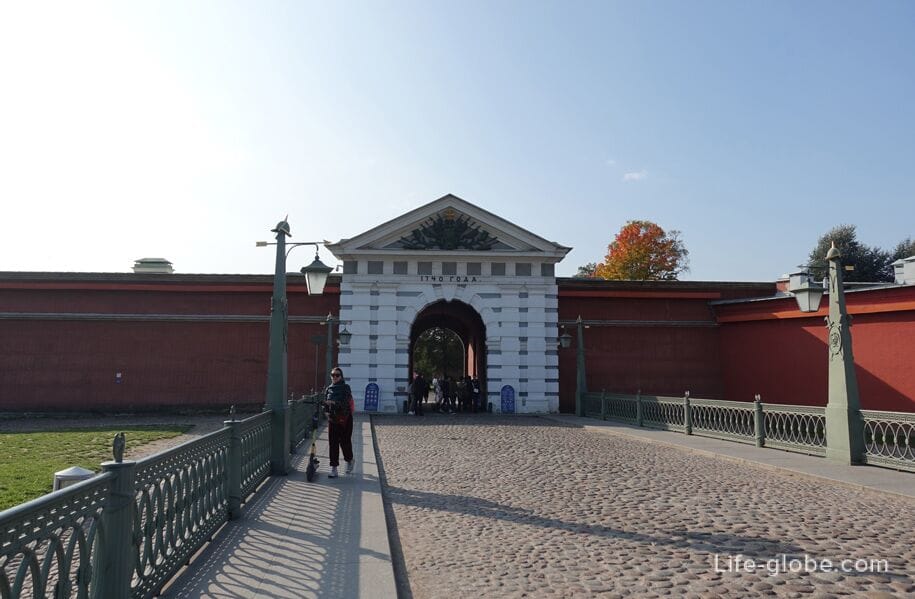
On a pile set in the water, next to the right wing of the Ioannovsky Bridge, there is a sculpture in the form of a figure of a hare, which received the unofficial name "The Hare who escaped from the flood".
The monument was opened on May 8, 2003 in honor of the completion of the repair of the bridge and the 300th anniversary of St. Petersburg. The authors of the project were the St. Petersburg sculptor Vladimir Petrovichev and architect Sergey Petchenko.
The hare sculpture has a height of 58 centimeters and is made of an alloy of silumin, aluminum and duralumin and covered with titanium nitride.
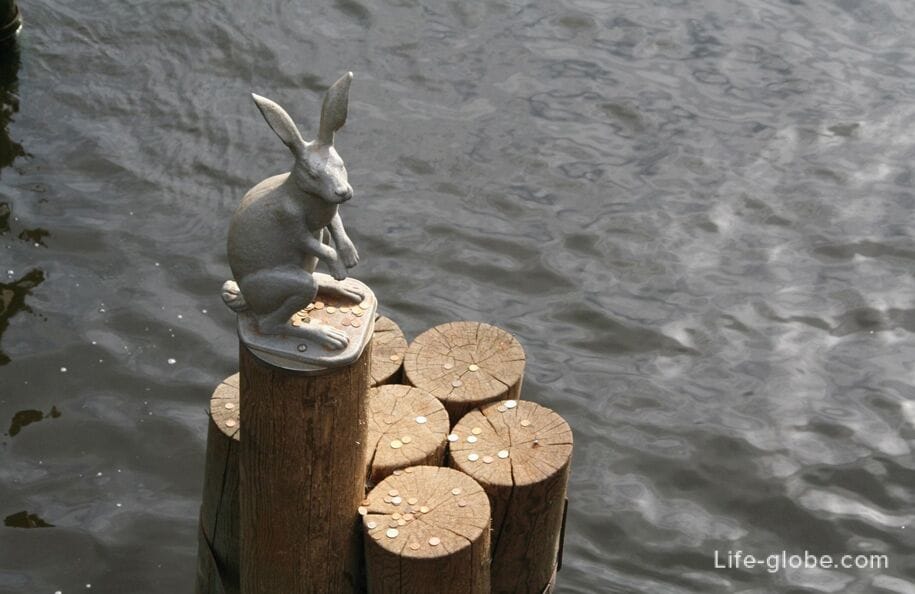
The Ioannovsky Bridge offers pleasant views, including the Kronverksky Strait, Petrogradsky and Zayachy Islands.


The history of the Ioannovsky Bridge dates back to 1703, when a floating wooden bridge connected the fortress on Zayachy Island with the buildings on Beryozov Island (now Petrogradsky Island).
In 1706, the floating bridge was replaced by a permanent wooden one on pile supports with a lifting part in the middle and will be called "Petrovsky Bridge".
In 1738, the bridge was rebuilt in 16-span, with the preservation of the lifting span.
In 1801-1802, the wooden part of the bridge was replaced by an eight-span structure of the sprengel system with a single-wing lifting part. The bridge layout was carried out manually. A granite parapet was installed on the stone arcades.
Since 1827, the arched spans of the bridge have undergone changes - the spans of the right and left wings were eliminated, including in connection with the improvement of the entrance to the neighboring Suvorovsky floating bridge (now Trinity Bridge).
By 1934, only one stone arched span remained on the right wing of the bridge, and three on the left, along with the dam adjacent to the Ioannovsky Gate of the Peter and Paul Fortress. In the future, all the arched stone spans were filled in and laid with a rubble slab.
Subsequently, the bridge was repeatedly repaired, improved and strengthened.
So, wooden fences on the bridge were replaced with cast-iron grilles of artistic casting, floor lamps with lanterns were installed, wooden supports were repaired, the metal span structure and wooden flooring of the roadway and sidewalks were replaced, the abutments and arcades were lined. The inner semicircular arch of the bridge was reinforced and covered with a chemical protective compound that protects against the negative effects of the water environment.
Today, the Ioannovsky Bridge is an architectural monument of federal significance and is under state protection.
All accommodation facilities in St. Petersburg, including in the city center and more remote from it, can be viewed and booked here